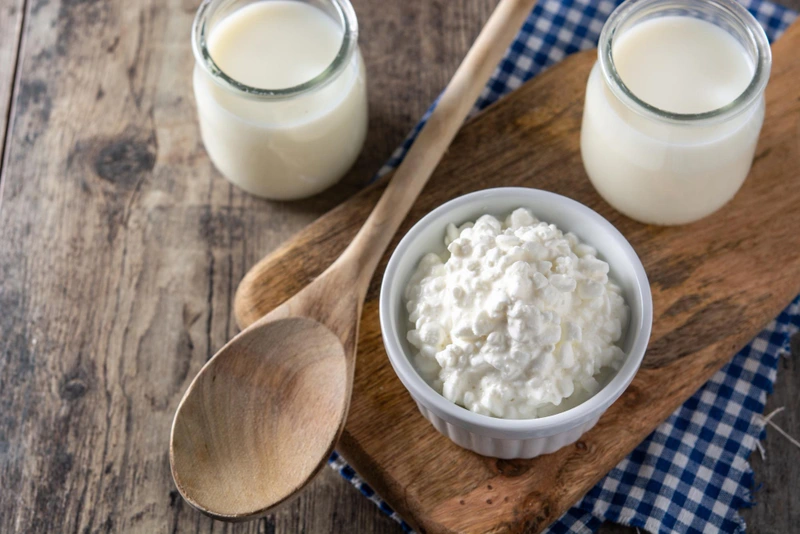- Published on: Jun 03, 2025
- 3 minute read
- By: Secondmedic Expert
Human Metapneumovirus (HMPV): Treatment & Symptoms
Human Metapneumovirus (HMPV) is a respiratory virus that causes illness in people of all ages, particularly young children, older adults, and people with weakened immune systems. The virus can lead to conditions such as bronchitis, pneumonia, and upper respiratory infections. With rising cases globally and in India, awareness about HMPV, its symptoms, and available treatment options is essential.
In this blog, we'll break down everything you need to know about Human Metapneumovirus (HMPV): Treatment & Symptoms in easy-to-understand language.
What is Human Metapneumovirus (HMPV)?
HMPV is a virus that belongs to the Paramyxoviridae family—the same group of viruses responsible for illnesses like RSV (Respiratory Syncytial Virus) and mumps. It was first discovered in 2001 but is now known to have been circulating for decades.
The virus mainly affects the respiratory tract and can range from mild cold-like symptoms to severe lower respiratory infections. It spreads most commonly in late winter and spring, similar to flu season.
HMPV in India: Current Overview
In 2025, several hospitals in India have seen a rise in cases of HMPV among children and elderly patients. Though not as widely known as COVID-19 or flu, Human Metapneumovirus is a common cause of pediatric hospital admissions during respiratory infection surges.
Doctors advise taking it seriously because it can mimic flu or pneumonia, making early diagnosis crucial.
Common Symptoms of HMPV
The symptoms of HMPV are similar to other respiratory viruses. They can range from mild cold-like symptoms to severe breathing difficulties, especially in vulnerable groups.
Main Symptoms Include:
-
Fever
-
Cough
-
Runny nose
-
Nasal congestion
-
Sore throat
-
Wheezing
-
Shortness of breath
-
Fatigue
-
Loss of appetite (especially in children)
In severe cases, it can lead to bronchitis or pneumonia.
How is HMPV Transmitted?
Human Metapneumovirus spreads from person to person through:
-
Coughing and sneezing
-
Close personal contact
-
Touching contaminated surfaces or hands
The virus can survive on surfaces like toys, doorknobs, and tables for several hours. That’s why regular handwashing and hygiene are essential.
How is HMPV Diagnosed?
Since HMPV symptoms resemble other viral infections, a lab test is the only way to confirm the virus.
Tests may include:
-
RT-PCR (Reverse Transcriptase Polymerase Chain Reaction) for detecting viral RNA
-
Nasopharyngeal swabs
-
Rapid antigen tests (less common)
In India, you can book respiratory virus panels or flu-like illness tests from diagnostic labs like Thyrocare through SecondMedic to check for multiple viruses including HMPV.
Human Metapneumovirus (HMPV): Treatment
There is no specific antiviral drug for HMPV. Treatment is mainly supportive, aimed at relieving symptoms.
Supportive Treatments:
-
Fever reducers like paracetamol
-
Cough suppressants
-
Steam inhalation
-
Hydration (drinking fluids)
-
Rest
Hospitalization is required if:
-
Breathing becomes difficult
-
Oxygen levels drop
-
Patient is elderly, a young child, or has chronic illnesses (like asthma or heart disease)
Doctors may provide oxygen therapy or nebulizers to ease breathing in severe cases.
How to Prevent HMPV
As with many respiratory infections, prevention is the best protection.
Tips to Avoid Infection:
-
Wash your hands regularly with soap and water.
-
Use alcohol-based hand sanitizers when outside.
-
Cover mouth and nose when sneezing or coughing.
-
Avoid touching your face, especially eyes and nose.
-
Disinfect commonly used surfaces at home and work.
-
Avoid close contact with sick individuals.
-
Wear a mask in crowded places during flu season.
There is no vaccine for HMPV yet, but researchers are working on developing one.
Who is Most at Risk?
-
Infants and toddlers (under 5 years)
-
Adults over 65
-
People with weakened immune systems
-
Individuals with chronic respiratory or heart diseases
These groups may experience more severe symptoms and need urgent care if infected.
When to See a Doctor
You should consult a doctor if:
-
Symptoms last more than 5–7 days
-
Breathing becomes difficult
-
Fever is very high or persistent
-
There's chest pain or confusion
-
A child has a bluish face or lips
Early intervention can prevent complications.
Recommended Tests on SecondMedic (Powered by Thyrocare)
While there is no HMPV-specific test for home collection, you can book tests like:
-
Complete Blood Count (CBC)
-
CRP (C-Reactive Protein)
-
Respiratory Pathogen Panel
-
Influenza A & B Detection
-
RT-PCR Viral Panels (on request)
Visit SecondMedic’s Lab Test Section to explore packages and book your test online.
Conclusion
Human Metapneumovirus (HMPV) is a growing cause of respiratory illness in India, especially in children and the elderly. Though there is no specific cure, early diagnosis and symptom-based treatment can help patients recover fully. Practicing good hygiene and avoiding close contact with sick people are the best ways to prevent infection.
Stay informed and protect your loved ones. For detailed insights and medical advice, bookmark this guide on "Human Metapneumovirus (HMPV): Treatment & Symptoms."
Our Services
Request A Callback
Recent Posts
Is Curd Good or Bad for Acidity?
Aug 02,2025
Can Fatty Liver Be Reversed Completely?
Jul 31,2025
How Your Sleep Schedule Affects Digestion
Jul 28,2025
How to Spot Signs of Hormonal Imbalance in Men
Jul 26,2025
Do You Need a Digital Detox? Signs and Symptoms
Jul 25,2025










